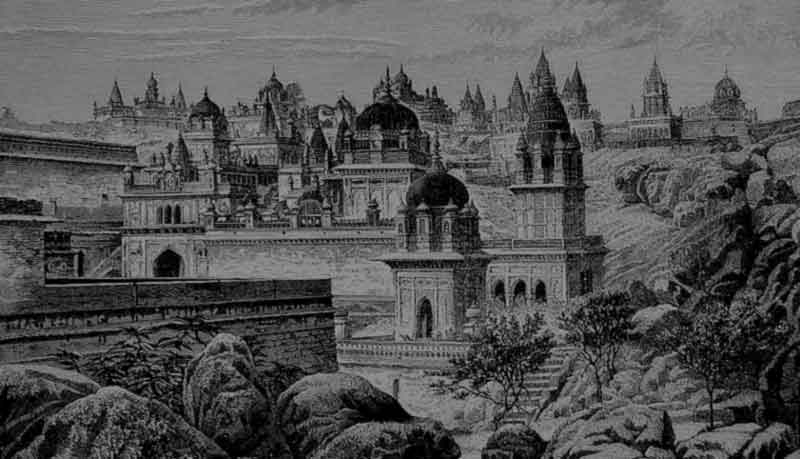
The History of Jainism

A Sonagir Engraving
The Nigantha Nataputta, sir, who knows and sees all things, who claims perfect knowledge and faith (in the following terms) : 'walking and standing, sleeping or waking, I am always possessed of perfect knowledge and faith' teaches the annihilation by austerities of the old Karma, and the prevention by in activity of new Karma. When Karma ceases, misery ceases ; when misery ceases, perception ceases ; when perception ceases, every misery will come to an end. In this way a man is saved by pure annihilation of sin (niggara) which is really effective. - Anguttara Nikaya
'The true ascetic should possess twenty-seven qualities, for he must keep the five vows, never eat at night, protect all living things, control his five senses, renounce greed, practise forgiveness, possess high ideals, and inspect everything he uses to make sure that no insect life is injured. He must also be self-denying and carefully keep the three gupti, he must endure hardships in the twenty-two ways, and bear suffering till death.' - A Magadhi Sloka
The history of Jainism is steeped in antiquity. It is not clear when the tradition began. Mahavira was the last of the Tirthankaras in a lineage of 24 Thirthankaras, which suggests that the tradition originated long before the birth of Mahavira. Some Jain scholars believe that Jainism might be older than the Vedic religion and probably existed during the Indus period. Jainism originated as an ascetic tradition. Just like the seers of the Upanishads, the early saints of Jainism preferred to live in seclusion and away from the public glare. Hence our knowledge of them is limited to the fragments of the ancient history of India that is currently available to us. The following are few resources available at Hinduwebsite.com about the history and antiquity of Jainism. Jayaram V
Suggestions for Further Reading
- History Of Buddhism, Early Period
- History of Buddhism: The Mauryan Period
- History Of Buddhism, The Post Mauryan Period, Reasons For Decline
- History Of The Four Buddhist Councils
- Discourses of the Ancient Nuns, Bhikkhuni-Samyutta
- The Staus of Buddhist Women in Buddha's Time
- A Record of Fa-hien's Travels to India and Ceylon - Part 1
- The Rock Edicts of King Asoka
- Sketch Of The History Of Buddhism In China
- Readings from the edicts of king Asoka
- History of Hinduism - the Ancient Period
- History of Hinduism, the Medieval period
- History of Hinduism, the Modern Period
- The Role of Historians in Indian History
- Hinduwebsite - the History Section
- The Biggest Holocaust in World History
- The Religion of the Indus Valley Civilization
- The Arthashastra of Kautilya
- The Historical Origin of Lord Krishna, the Incarnation of Vishnu
- Wendy Doniger - Alternate History or Altering the History?
- Essays On Dharma
- Esoteric Mystic Hinduism
- Introduction to Hinduism
- Hindu Way of Life
- Essays On Karma
- Hindu Rites and Rituals
- The Origin of The Sanskrit Language
- Symbolism in Hinduism
- Essays on The Upanishads
- Concepts of Hinduism
- Essays on Atman
- Hindu Festivals
- Spiritual Practice
- Right Living
- Yoga of Sorrow
- Happiness
- Mental Health
- Concepts of Buddhism
- General Essays